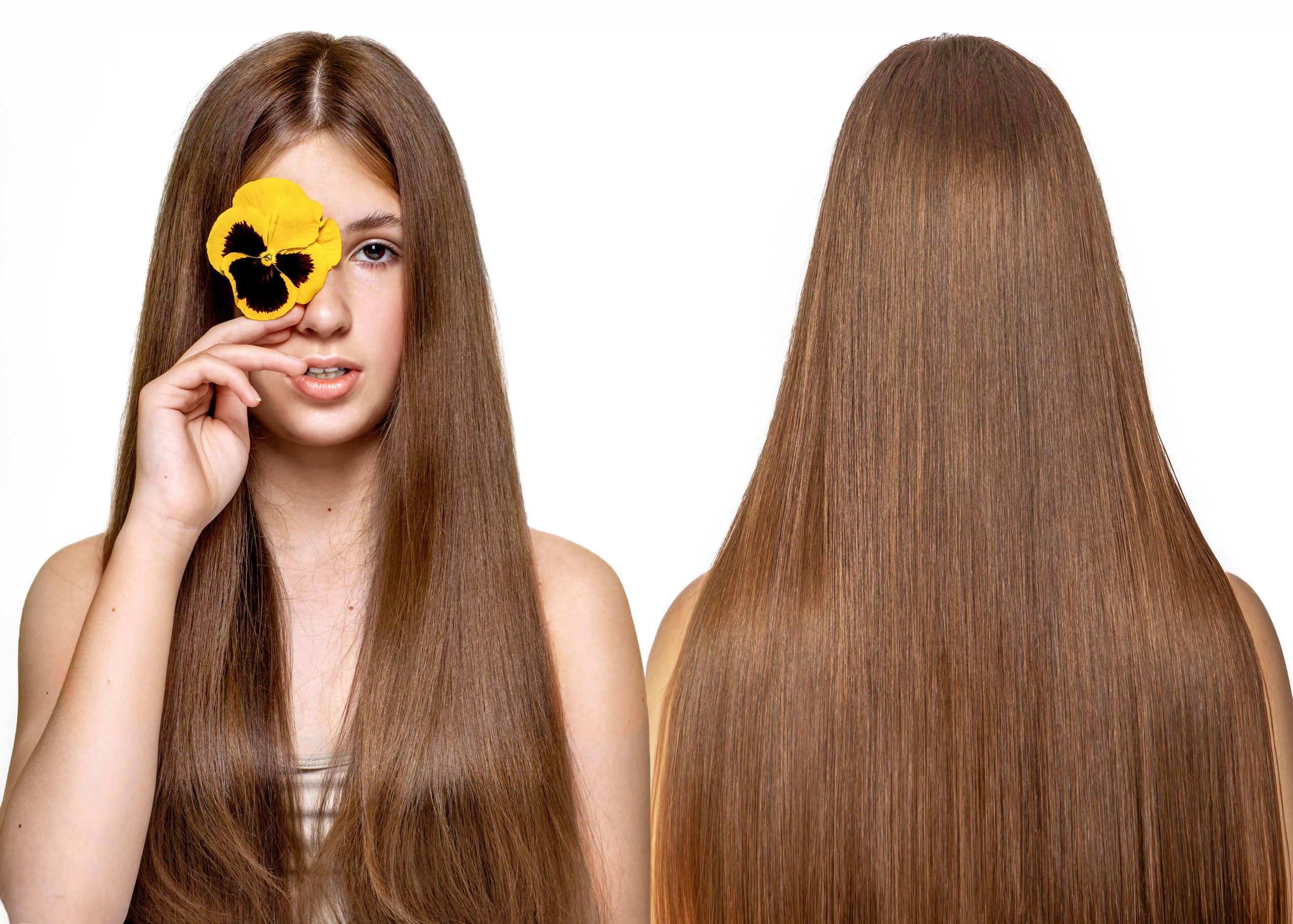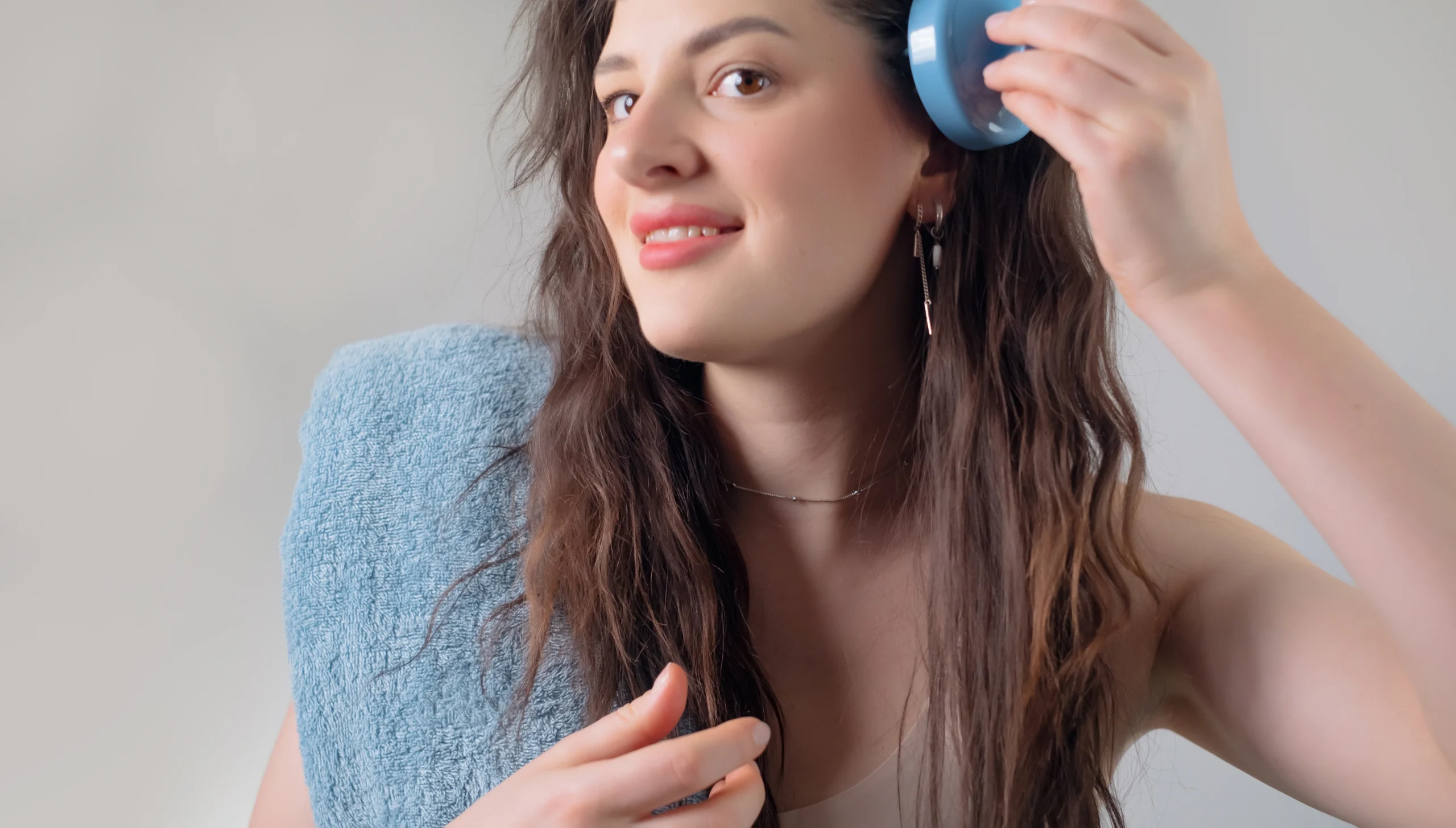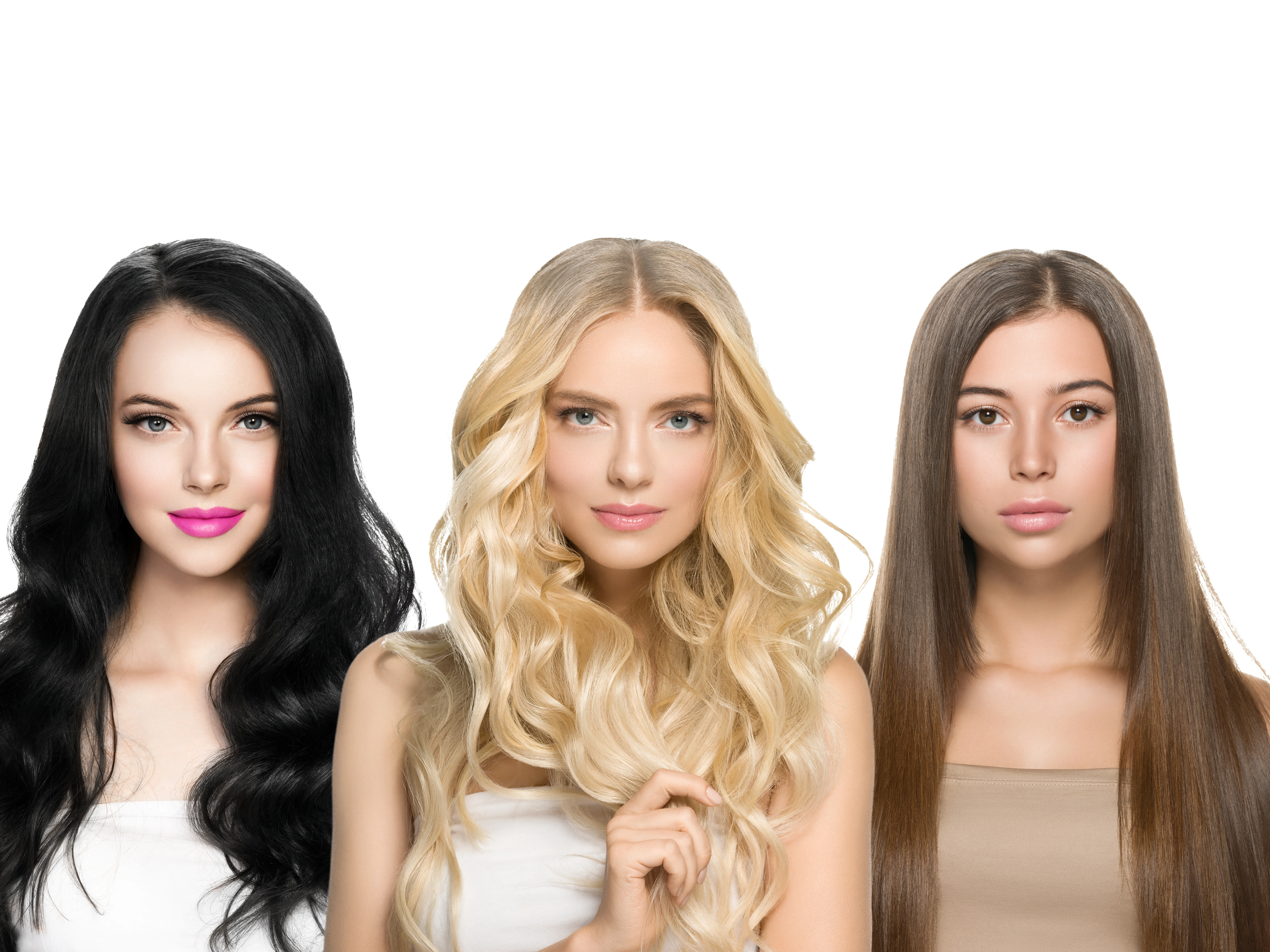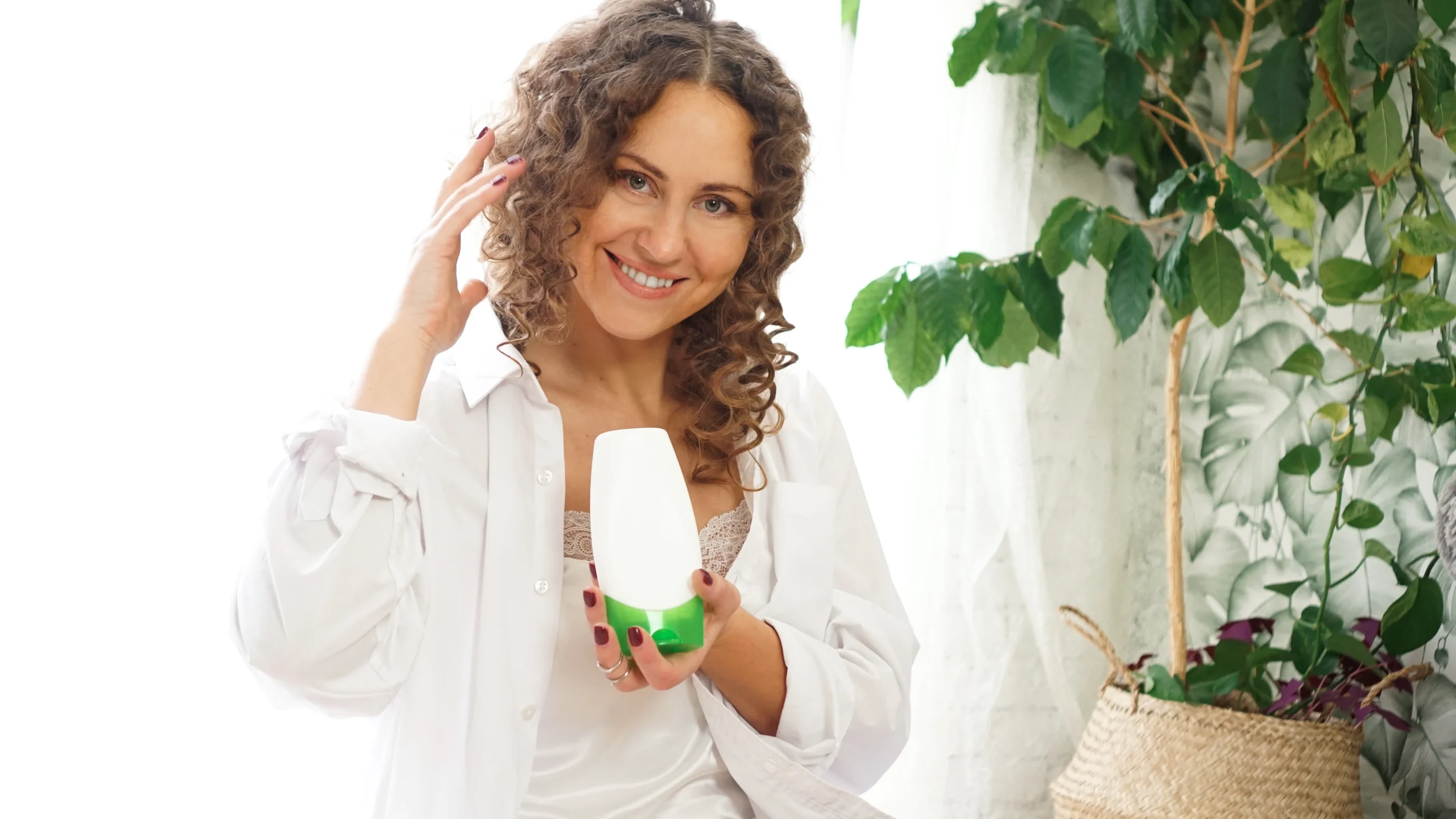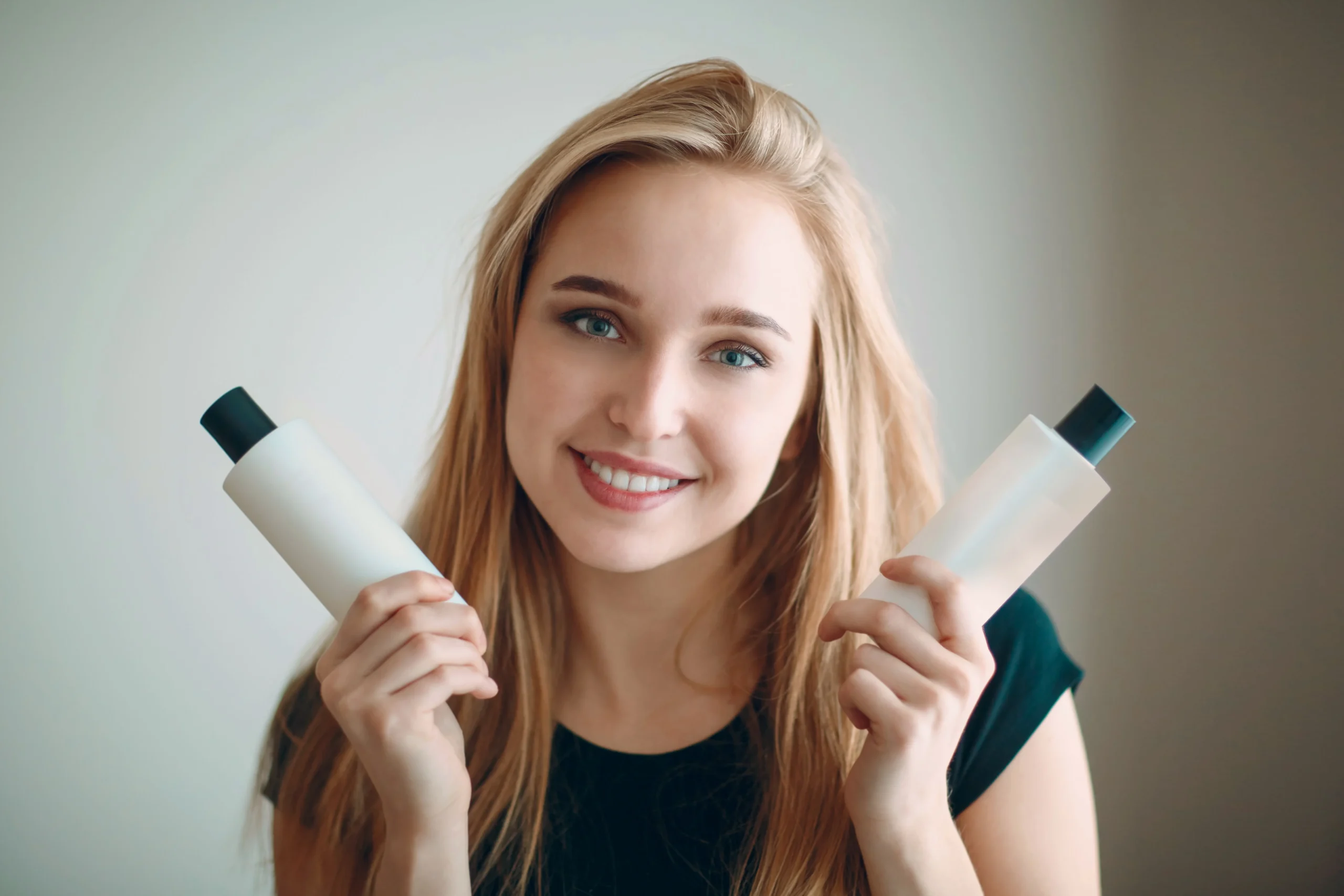Understanding What Type of Hair Has a Hard Glossy Finish
To understand what type of hair has a hard, glossy finish, it’s essential first to know that this unique texture is usually a combination of genetic makeup, environmental influences, and styling habits. This hair type is exceptionally smooth, highly reflective, and often hard to touch. It can occur naturally in certain hair types, but is sometimes artificially created through intense straightening, heat styling, or silicone-based products. Although it looks great in pictures or the light, this hair finish is not always a sign of well-being.
When the hair shaft is healthy and intact, it reflects light beautifully, producing a shiny or glassy shine. But when the cuticle becomes too compact or is covered in synthetic material, hair can feel stiff and rigid. This problem is usually more common in straight and coarse hair, especially in people of East Asian descent. On the other hand, wavy or curly hair can develop this type of glassy finish after repeated heat tools or smoothing treatments.
In today’s beauty world, a glossy hair finish is a coveted quality-it’s the epitome of shine, smoothness, and control. But is it natural or artificial? And is it always healthy? In this guide, you’ll learn about hair types with a hard, glossy finish, its causes, management strategies, and the scientific structure, beauty, and proper care of this hair type.
The Scientific Structure of Hair: Why Some Hair Is More Shiny
The structure of hair is primarily made up of a type of protein called keratin, which has three layers: the medulla (innermost part), the cortex (middle Layer), and the cuticle (outermost Layer). This cuticle is the primary regulator of the outer beauty of the hair. When these cuticles are flat and neatly stacked on each other, the hair reflects light well and looks shiny. This texture is commonly seen in thick, straight Hair, especially East Asian Hair, where the cuticles are densely packed and the hair shaft is round, resulting in naturally more shine.
A hard, glossy finish is created when the cuticle becomes too smooth or hard. This happens due to heat sealing processes, straightening, and hair sealing. On the other hand, curly or textured hair has a relatively raised cuticle, which diffuses light and creates a matte finish unless it is manipulated through styling.
Simply put, hair shine is mainly dependent on the cellular level. Hair that naturally maintains cuticle alignment without frizz or breakage easily achieves that glassy, shiny look. However, when hair loses moisture or becomes coated in products, it can look glossy on the outside but dry and heavy on the inside. That’s why it’s essential to understand your hair’s natural structure and needs and treat it like skin.
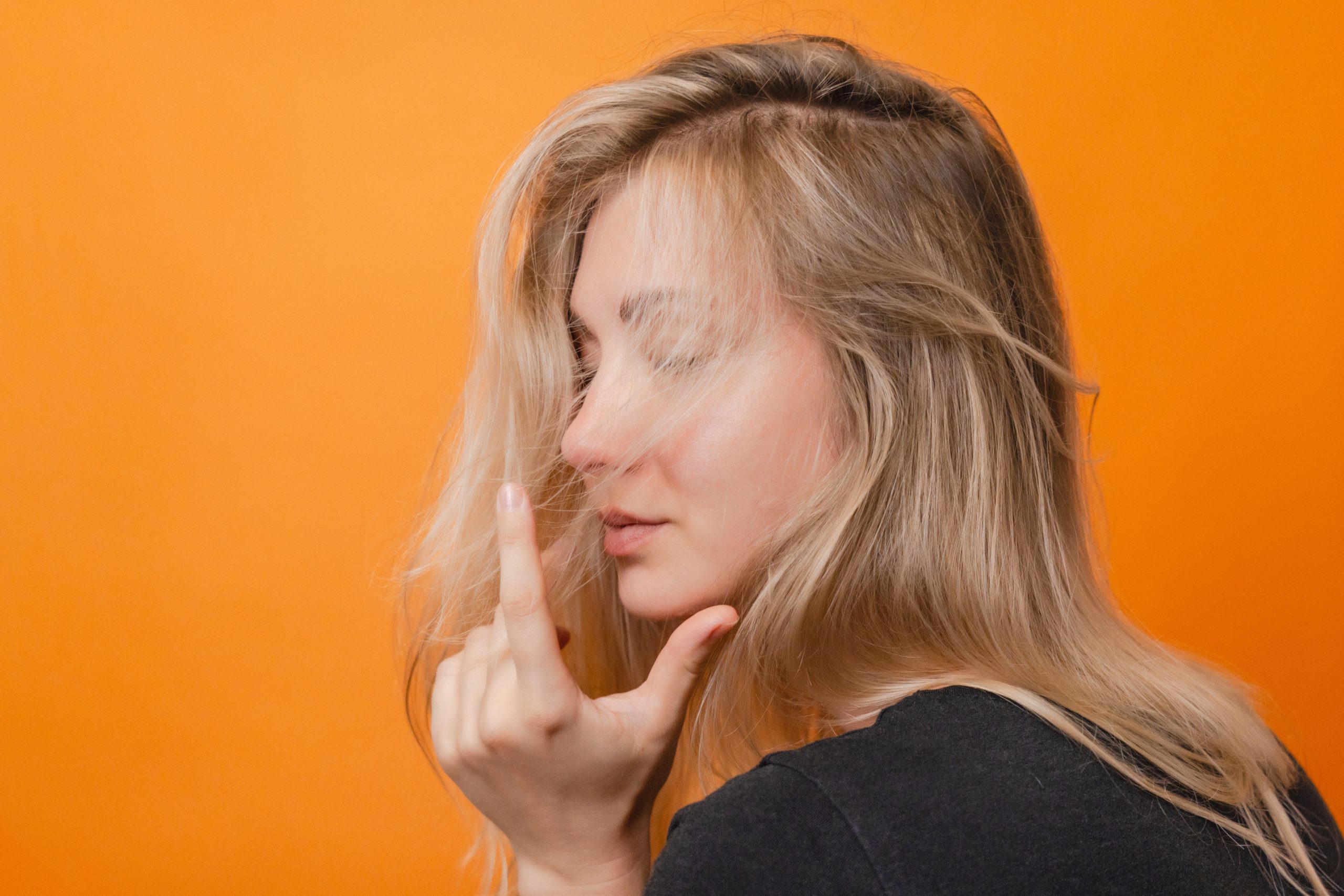
How The Cuticle Layer Affects Gloss and Texture
The hair cuticle layer comprises tiny, scale-like cells stacked on top of each other like roof tiles. These scales are evenly spaced in healthy hair, protecting the cortex and reflecting light. When this cuticle is smooth and sealed, hair is much shinier, softer, and more moisture-resistant.
But when this layer is overstressed, such as through repeated flat iron use, keratin treatments, or excessive product use, hair can develop a hard, glassy finish that feels unusually stiff and rigid. In this situation, the cuticle flattens and locks, making the Hair unable to absorb moisture or respond to environmental changes (such as humidity).
Some styling products, especially those containing silicones, can create a coat on the hair, giving it a glossy effect. This prevents friction and makes the hair look shiny, but it can dry out and weaken it in the long run.
So, as attractive as glossy hair may seem, it’s not always a sign of proper health—it can be a subtle visual illusion. Maintaining both the beauty and health of your hair requires careful care.
Characteristics Of Hair With A Hard, Glossy Finish
Hair with a hard, glossy finish is easily recognizable by its shiny surface, firm structure, and uniform texture from root to tip. Unlike soft, frizzy hair, this type stays in place, holds its shape, and looks neat without additional styling. Sometimes this hair can look overprocessed or damaged, but that’s not always true. Some people’s hair is naturally this way-it depends on how the hair’s cuticles are arranged and the structure of the shaft.
Key Features:
- Extreme Smoothness: When touched with a finger, the Hair feels very smooth and has a very low friction
- High Reflectivity: Light reflects off the Hair’s surface, creating a “mirror-like” or glass-like shine.
- Firmness: Hair retains a specific structure without moving freely.
- Lack of Volume: Hair often looks flat or heavy due to the sealed condition of the cuticle.
- Impediment to Product Absorption: Oily or creamy products cannot easily penetrate the Hair.
- Difficulty Holding Curls: Due to the Hair’s rigidity, holding curls or waves for a long time is challenging unless a strong holding product is used.
The most interesting thing is that these features can be seen naturally or created artificially through styling. For example, Japanese hair straightening treatments create a permanent, glossy finish by altering the bond structure of the hair. However, this finish can also be seen on naturally unprocessed hair, especially those with thick, straight, and low-porosity hair.
Also, knowing the difference between healthy and artificial shine is essential. Healthy Hair with a natural shine reflects internal moisture and good cuticle positioning. On the other hand, over-processed hair may have a shiny outer coating, but it’s brittle and weak inside.

Ethnic Hair Diversity and Glassy-Like Texture
Hair texture and shine vary greatly between ethnicities, and this variation significantly affects the likelihood of developing a hard, glossy finish. While all hair can be smooth and shiny with the proper care and environment, the hair of some ethnicities is naturally more prone to developing this glossy finish.
Asian Hair and Its Unique Surface Characteristics
A natural, hard, glassy finish is most common in East Asian Hair, especially. This type of Hair is usually:
- Thick and Perfectly Straight
- Round Shaped
- Cuticle Layer Densely Arranged
Due to its structural properties, this hair reflects light very well. The smooth surface reduces tangles and gives a uniform shine throughout the hair. Many people achieve this glossy look without any heavy products or treatments. However, this same structure also makes it difficult to curl or texture the hair because it resists bending.
This Hair is typically low porosity, meaning it doesn’t absorb moisture as easily. While this helps prevent frizz, it can also lead to product buildup, especially when using product buildup, especially when using products containing silicone. This buildup can make the hair feel even more brittle and shiny.
American of African descent Hair: Can You Achieve A Glossy Sheen?
American of African descent hair usually has a naturally curly or kinky texture. Its cuticle layer is relatively high, and the curl pattern is complex, so the hair does not usually look glossy. However, hair can be given a temporary, hard, shiny finish using heat styling or a keratin smoothing treatment. In this case, the hair’s natural curl is flattened, and the cuticle is sealed, resulting in temporary gloss and smoothness.
Although attractive, these changes are usually short-lived and require high maintenance. Excessive heat or chemical use can damage the inner structure of the hair, leaving weaknesses hidden beneath the shiny exterior.
Maintaining moisture in this type of Hair is essential, as achieving a glossy finish often strips the Hair of its natural oils. Therefore, using a deep conditioner and heat protectant can help maintain the hair’s softness while also enjoying the aesthetic beauty of smoothness.
Why Does Hair Feel Strong and Look Shiny?
To understand which hair type has a hard, glossy finish, you need to know why hair sometimes looks hard and shiny. The appearance and feel of Hair depend largely on internal factors, such as health conditions and genetics, and external factors, such as hair care habits and product use.
One of the main reasons hair looks the way it does is because of how light interacts with the hair shaft. When the outer Layer of the Hair, the cuticle, is smooth and well-groomed, it reflects light very well, resulting in a beautiful shine. But when this cuticle becomes excessively tightly sealed or covered with a coating, the hair becomes hard or stiff to the touch. This condition can occur naturally, especially in those with thick and straight hair. Still, it can also sometimes be caused by chemical treatments or the use of heavy products.
The two main reasons why Hair feels hard are:
- Natural Density and Low Porosity: Some hair types, especially East Asin hair, are naturally dense and resistant to moisture absorption. This results in a strong, firm feel to the hair that feels healthy and tough.
- Synthetic Coatings Created By Products: Silicone-based serums and heavy oils make hair shiny but reduce flexibility.
Hair is often dehydrated on the inside, between feeling hard and looking shiny. In this case, the external shine gives the false impression that the hair is healthy, while the cortex inside is weak and brittle. That’s why professionals always emphasize that hair is as soft and supple as shiny.
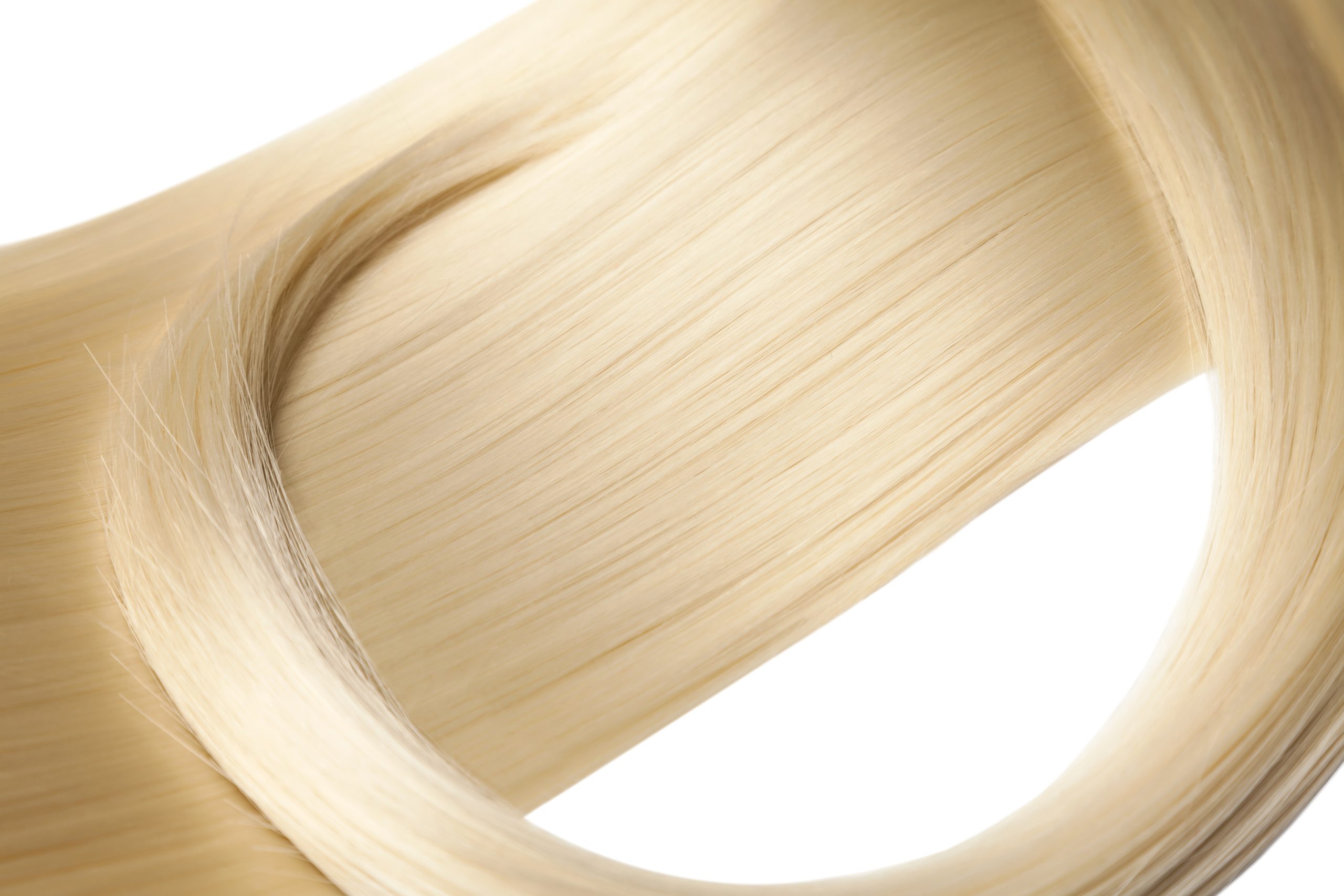
External Factors For A Hard, Glossy Finish
While genetics significantly determines this type of hair finish, many also attribute it to external factors. Daily habits, environmental influences, and additional styling tools or products can all contribute to this unique texture.
Heat Styling And Chemical Treatments
Tools like flat irons, blow dryers, and hot brushes apply high heat directly to the hair cuticle. Over time, this repeated heat seals the cuticle tightly, making the hair look straight, shiny, and strong. While this looks attractive, it reduces the Hair’s flexibility and makes it feel stiff.
Chemical treatments such as:
- Japanese hair straightener
- Chemical relaxer
These treatments restructure the hair shaft and provide long-lasting smoothness. They leave hair looking mirror-smooth but also reduce natural movement and flexibility. This finish is usually semi-permanent and challenging to remove once the treatment is rinsed.
Product Buildup and the Illusion of Shine
Another major cause is product buildup. Many modern hair products contain:
- Silicone (such as dimethicone)
- Wax
- Polymer
- Heavy oil
These substances sit on the hair’s surface and reflect light, giving it a temporary shine. But if left unwashed for a long time, they build up and make hair feel stiff, coarse, or oily.
These products often create the illusion of healthy, shiny hair, but in reality, they block the hair from breathing. Over time, this buildup can lead to hair damage, hair loss, and weakened strands. This is why regular detox or clarifying treatments are essential, as they help maintain the hair’s softness and natural shine.
Environmental Impact
Sun damage, hard water minerals, and pollution can also change the structure of the hair cuticle, sometimes making the hair hard and sealed. While these changes may not be immediately noticeable, they can significantly impact hair quality in the long run.
Is Frizzy Shiny Hair Healthy?
The idea that a glassy, shiny finish on your hair means it’s healthy isn’t always true. Many people think smoothness and shine mean good hair, but not all shine indicates healthy hair.
Healthy Shiny Hair vs. Unhealthy But Shiny Hair
Naturally healthy, shiny hair is usually the result of genetics or good hair care. This type of Hair reflects light better because the Hair’s cuticle layers are straight and smooth. This care includes:
- Nutritions diet
- Drink enough water
- Moderate use of heat or chemicals
- Use products according to hair type.
On the other hand, if hair is shiny due to excessive hair products, heat styling, or chemical use, it may not be healthy. See the table below:
| Features | Healthy Shine Hair | Chemical/Unhealthy Shiny Hair |
| How it feels to the touch | Soft, flexible, and smooth | Hard, woody, or brittle |
| Glimmer | Same from head to toe | Patchy or patchy glimmer |
| Texture | Bouncy and Lively | Heavy or greasy feeling |
| Absorbency | The Lightweight product absorbs easily | Resistant to water and product absorption |
| Elasticity | Returns when stretched | Breaks easily |
This “hard glossy” finish often indicates low-porosity hair, meaning water or products cannot penetrate the hair. While low-porosity hair can be healthy, it still requires different care.

The Right Routine for Healthy Hair
Shampoo and Conditioner Management
- Use a mild sulfate-free shampoo.
- Use a clarifying shampoo once every 2-3 weeks.
- Avoid heavy conditioners.
- Choose products labeled “Low Porosity” or “Fine/Thick Straight Hair.”
- Wash your hair with cold water to seal the cuticles.
Retain Moisture In Hair
If your hair feels stiff, it needs moisture from the inside, even if it looks shiny. Follow these methods:
- Use a light leave-in argan, jojoba, or sweet almond oil spray.
- Avoid heavy butters or creams, unless your hair is thick and coarse.
- Apply product to damp, not wet, hair.
- Open cuticles with a steam treatment or hot towel to increase product absorption.
- Use a humectant like glycerin or aloe vera.
- Deep condition once or twice a week.
- Seal in moisture with a light oil or serum afterward.
Heat Styling Warnings
- Use a thermal protectant spray if using heat.
- It is best not to use temperatures higher than 375°F (190°C.
- Excessive blow drying or straightening can cause internal damage.
Conclusion
So, it is wrong to think shiny hair like glass is always healthy. If your hair is naturally like that, that is good. However, if such a finish comes through chemicals, extra products, or heat, focus on the health of your hair, not the appearance of shine.
How To Soften Hair That’s As Shiny As Hard Glass
If your hair looks shiny and lustrous but feels stiff, limp, or dry, it’s time to soften and revitalize it. The good news is that with the proper routine, products, and ingredients, you can make your hair soft and supple while maintaining its shine.
What Should Be The Goal?
The main goal is to keep the Hair’s cuticle layer intact while delivering moisture to the inner shaft. Many times, products only work on the hair. Therefore, products and methods that are absorbed are needed.
Deep Conditioning Technique: The Best Way to Soften Hair
Deep conditioning is one of the most effective methods for changing the texture of hard, glass-like hair. However, not all deep conditioners are created equal. Choose one that:
- Moisture-rich, not protein-based
- Light but able to penetrate deeply
- Rich in humectants, such as glycerin, aloe vera, and panthenol
How To Use:
- Apply conditioner to clean, wet hair.
- Use a heat cap, streamer, or hot towel to slightly open the cuticles and allow the conditioner to penetrate.
- Leave it on for 20 – 30 minutes and wash it off with cold water.
Doing this routine once a week will significantly reduce the stiffness and rigidity of your hair.

Natural Oils: The Secret Key to Bringing Softness to Hair
Certain natural oils can still make a big difference even if your hair is reluctant to absorb products. Choose oils that have small molecular sizes and penetrate the Hair easily:
- Argan Oil: Rich in fatty acids and vitamin E, Makes Hair soft and smooth
- Jojoba Oil: Acts as the scalp’s natural oil
- Camellia Oil: Very effective on coarse or straight Hair
- Baobab or Marula Oil: Light and deeply nourishing
Usage Tips:
- Apply to damp Hair to lock in the water and allow the oil to penetrate
- For better results, follow the LCO method (Liquid, Cream, Oil)
Gradually, with regular use, the Hair’s stiffness and excessive shine will decrease, and flexibility will return.
Styling Tips: Special Techniques For Glass-Like Hair
This type of hair usually has less volume, requires different techniques to maintain the style, and some tools may not work correctly.
Balance Cuts and Layers
- Long Layers: Add movement to your Hair
- Face-Framing Cut: Helps lighten a heavy face.
- Blunt Ends: Maintains a great glossy look on straight Hair
Avoid excessive thinning or razor cuts, which can increase flyaways or frizz.
When To Use Which Tool?
If You Want to Maintain A Shiny Look:
- Use a ceramic flat iron
- A boar bristle brush spreads the Hair’s natural oils.
- Finish with a lightweight silicone serum.
If You Want to Bring Softness:
- Use an ionic hair dryer and diffuser.
- Use a texture spray or sea salt spray.
- Use heatless curlers or rollers to add volume.
Do not apply excessive pressure or pull on the hair. Use a wide-tooth Comb and a microfiber towel.
Change Your Styling Routine According To The Season
Hair can be thicker or oilier in the summer and rougher in the winter, so change your hair routine to match the weather.
Conclusion:
If your hair is shiny like glass but not soft, don’t worry. With proper care, oiling, and deep conditioning, your hair will become supple, vibrant, and healthy again, with shine and softness.
Discover More Articles On Makeup And Beauty Here
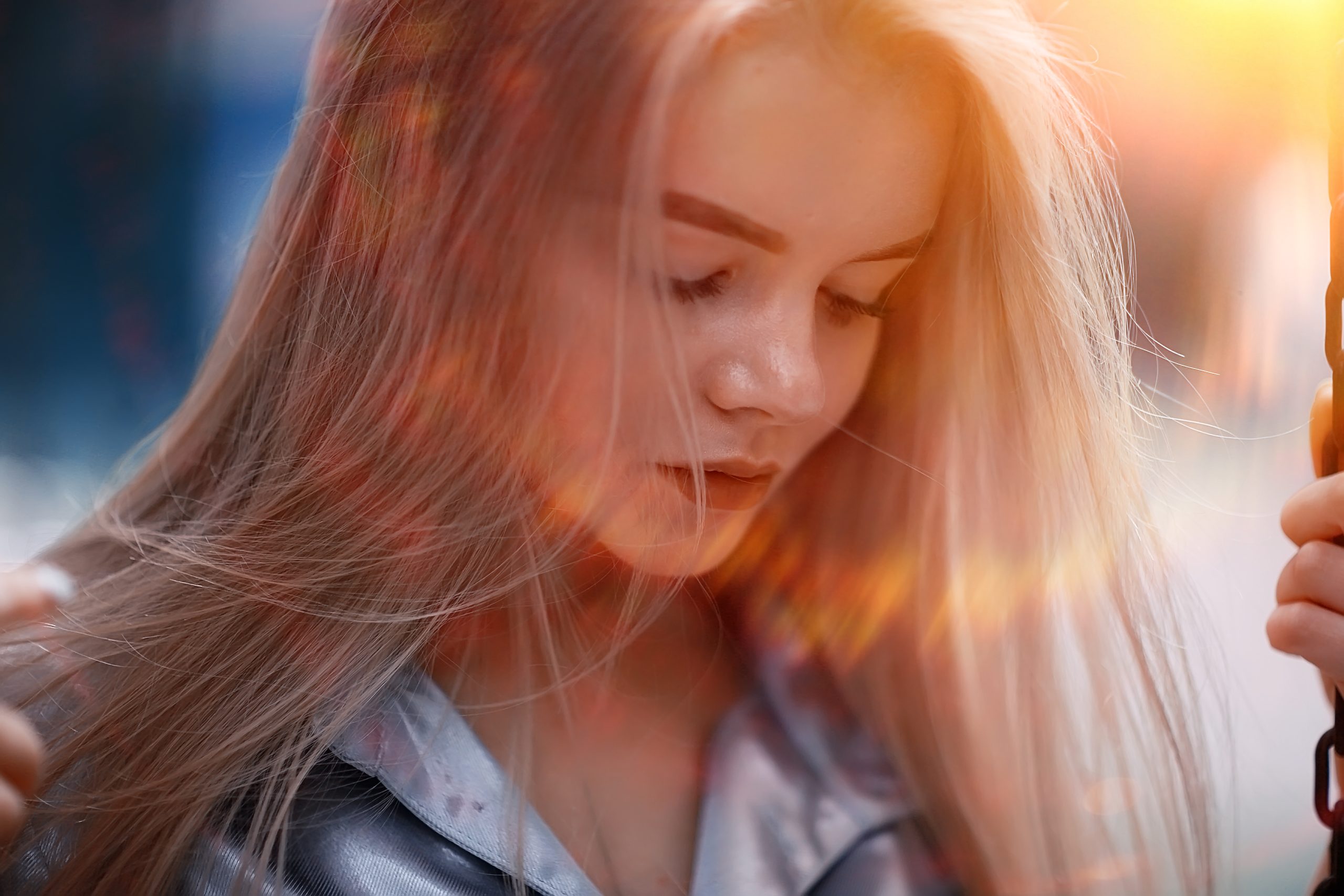
Final Thoughts – What Type of Hair Has a Hard Glossy Finish
In summary, understanding the “hard glassy” hair type is not just about the outer shine – it reflects the Hair’s internal health, care, and habits. Such textures are often found naturally, especially in those with straight, thick, low-porosity hair – they naturally enjoy that sleek, glassy look. However, certain habits, chemical treatments, or the use of heavy products can also lead to this type of finish.
If your hair looks shiny but feels dry, brittle, or difficult to manage, it may lack internal moisture. In this case, you need to change your routine and pay attention to:
- Clean excess oil from your Hair by clarifying regularly.
- Deep-condition your hair once a week to provide deep moisture.
- Use a light, easily absorbed oil, such as argan, jojoba, or marula oil.
The most important thing is that your hair feels as good as it looks. If your hair looks shiny but feels plastic to the touch, it’s unhealthy. If it’s truly plastic to the touch, it’s not healthy hair. Truly healthy hair will be shiny but also soft, bouncy, and flexible.
If you are born with this feature, take care to maintain it. If you want to achieve it artificially, ensure it does not weaken the Hair’s standard glassy finish. It can be a stunning feat, only when it is maintained with care, awareness, and discipline.
The glow of your hair should be as visible as it is palpable; that’s the ultimate beauty.

